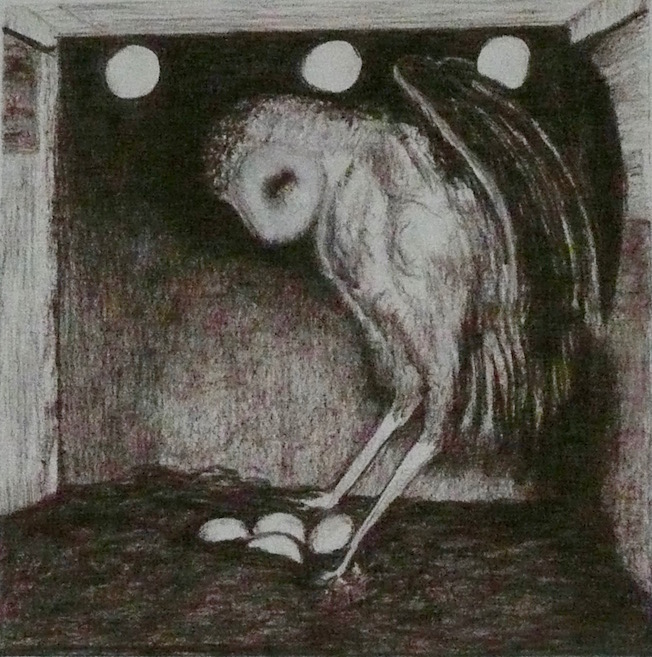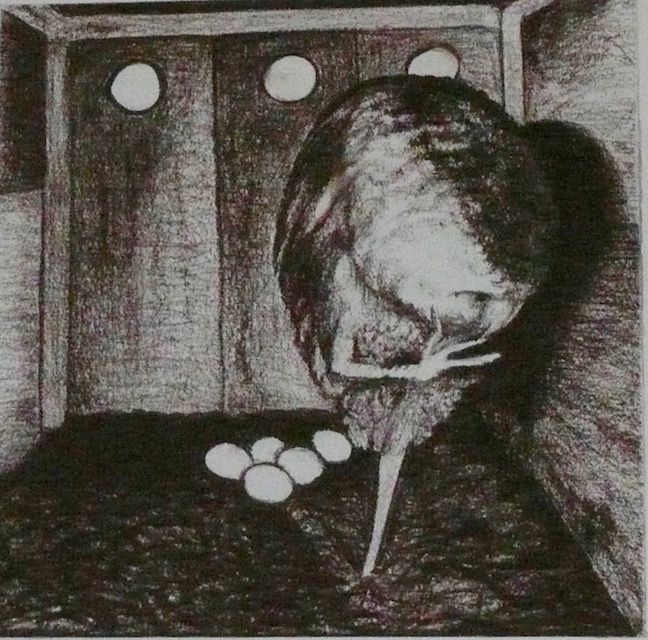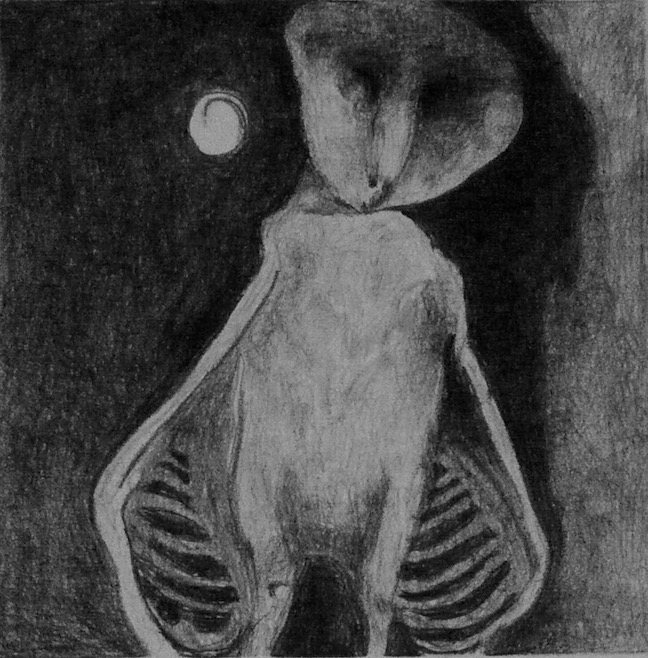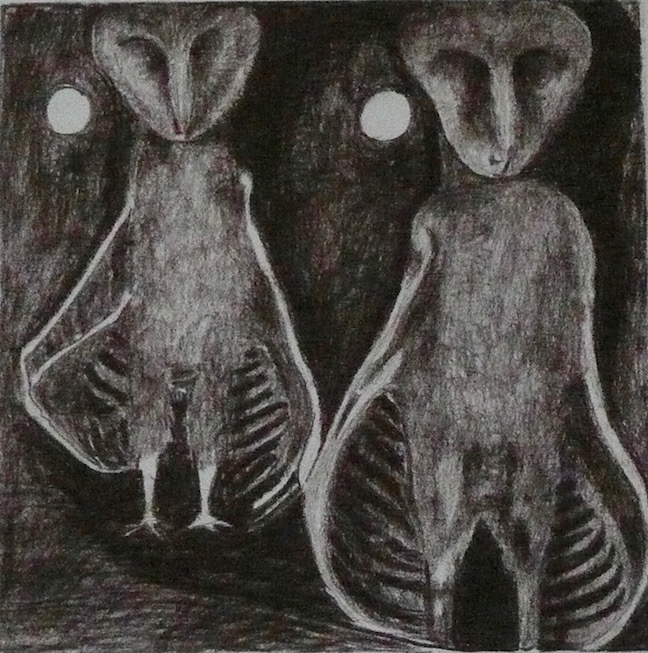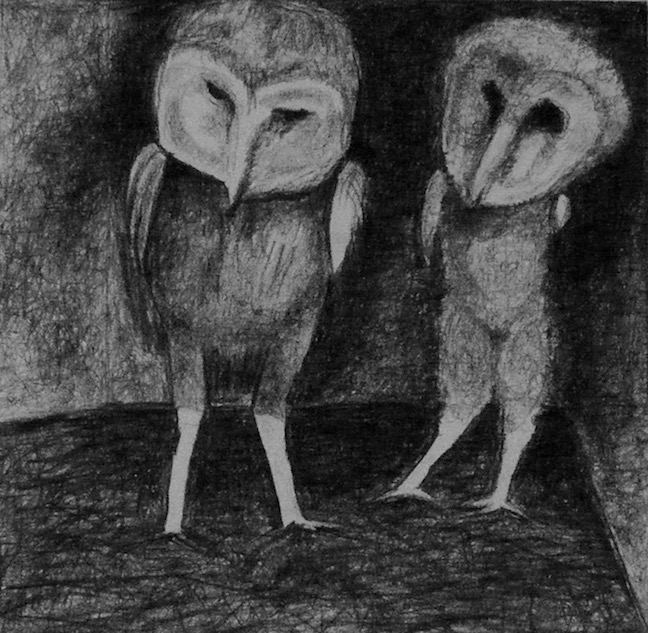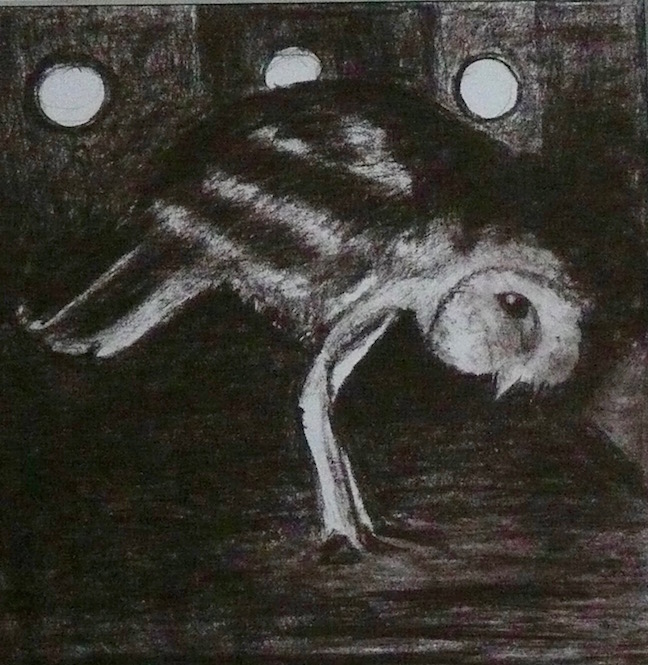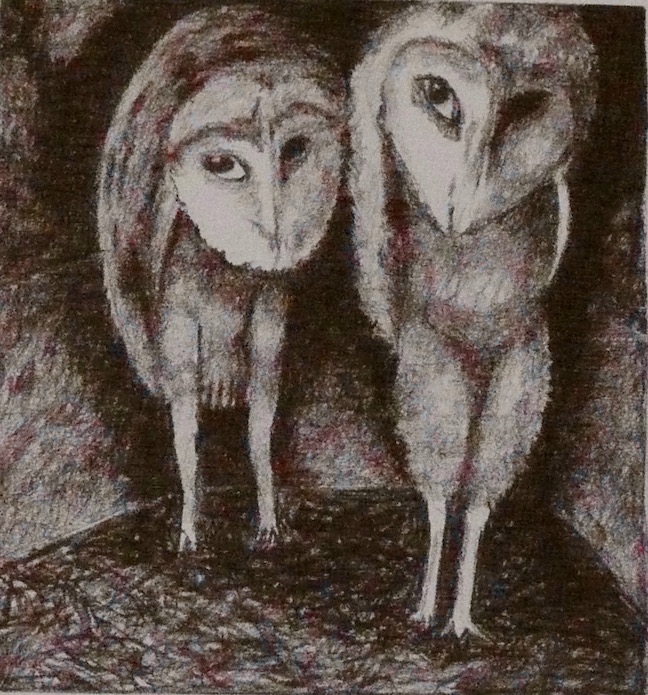Barn Owl Conté Crayon Drawings
Artist Statement
It was only upon reading Lunch Ticket’s call for submissions that I realized that the small cache of barn owl drawings I had made was a real “body of work.” Up until that point in time, I had shown the drawings to only one friend, and I had exhibited only one of the drawings. Looking at all of the drawings after a long time, I decided that they should be seen by more people.
Between 2012 and 2013, I worked intermittently on drawings of barn owls seen on my computer by means of a remote-viewing camera sponsored by The Cornell Lab of Ornithology. I did these drawings as a challenge to myself. I wanted to refine my skills in observation and manual dexterity and also use a material I had long ignored—Conté crayons.
I have always liked the pale, heart-shaped face and dark eyes of barn owls. They have a more “charismatic” appearance than fierce-looking yellow-eyed owls. (Barn owls are sometimes featured in popular Valentine’s Day imagery, but other owls make their appearance on Halloween.) Their long, featherless legs and large heads make them objects of anthropomorphization. This sentiment belies the fact that they are skilled predators.
The barn owl nest box seemed like a small theater to me. In this little wooden space I saw important parts of the life cycle of barn owls unfold—courtship, nesting, egg laying, hatching, prey delivery, development of plumage, and fledging. My earliest drawings gave the owls a cartoonish appearance as I interpreted their interactions and postures in human terms.
As time passed I focused more on their ornithological development. The owlets pass through an “ugly duckling” phase as their covering of down is gradually replaced by the true feathers of barn owl plumage. This stage of their development leads to a more expressionistic type of drawing.
Conté crayons proved to be a very satisfying medium to work with. The shape of the crayon can be manipulated to create broad swaths of color for shading and defining form. It can be turned to use a sharp edge for a fine line. I lightened and toned some areas of drawing by using a kneaded eraser or a small piece of tape. Using only one color crayon, occasionally supplemented with white, I was able to create a genuine reflection of the subtle colors and patterns of barn owls.

